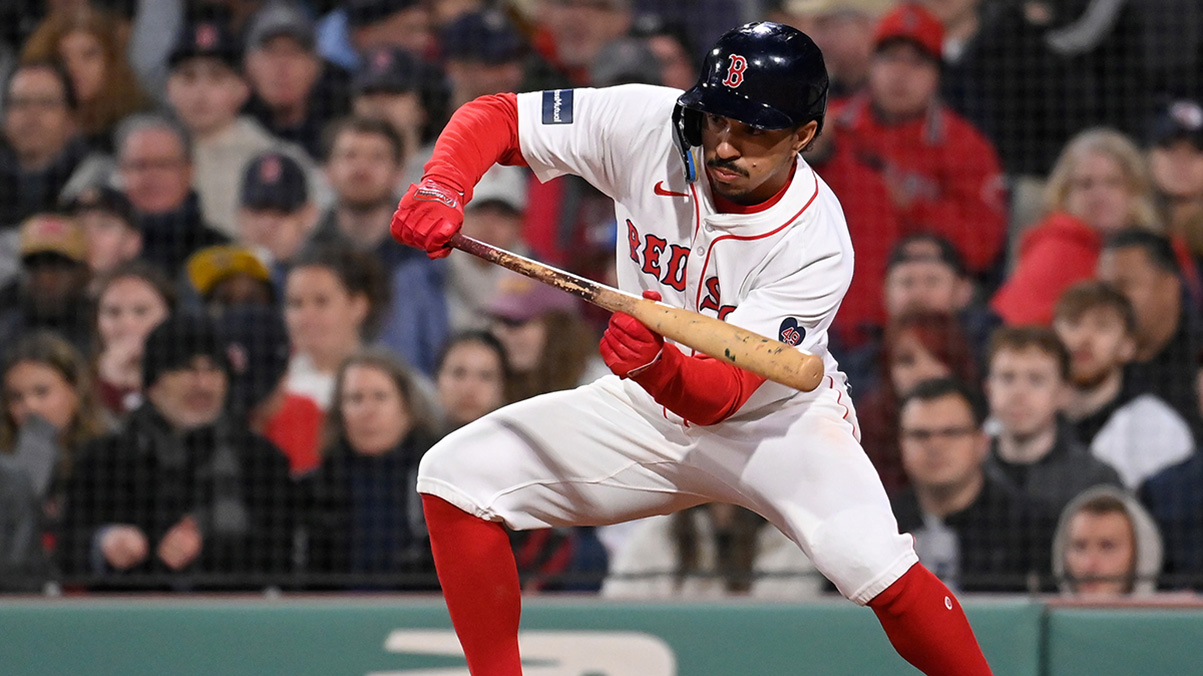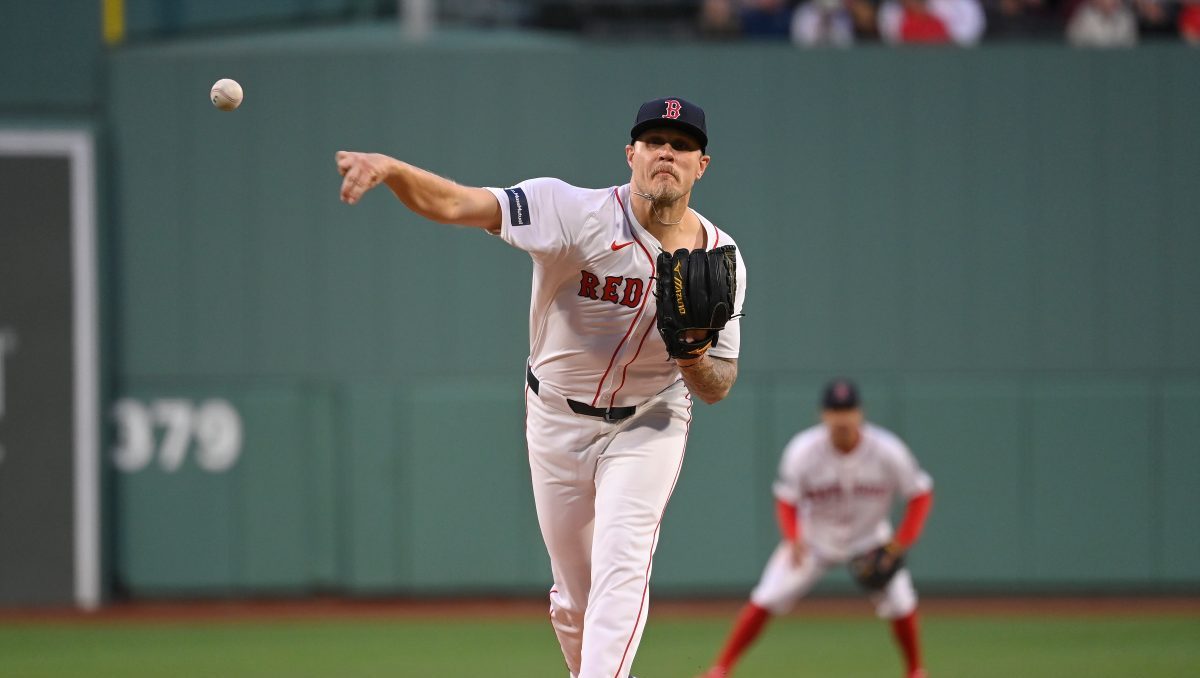FORT MYERS, Fla. — A sole medical issue that probably won’t ever impact J.D. Martinez and the Red Sox held up the slugger’s introductory press conference, which went off smoothly Monday morning at JetBlue Park.
Martinez never thought his contract was in any trouble.
“No, not really, that thought never crossed my mind,” Martinez said when asked if he thought the deal may fell apart. “I kind of knew that it was really, like they said, being thorough, going through everything. Crossing-all-the-t’s and dotting-all-the-i’s-type deal. I never once worried about it.”
At the beginning of the 2017 season, Martinez had a sprained Lisfranc ligament in his right foot.
“And so it healed, went on his way and played,” Martinez’s agent, Scott Boras, said Monday. “Obviously, the X-rays and things showed he had this condition called the Lisfranc condition. It’s healed, back to normal. The question is, what if that has any impact in the long term? And [we] kind of agreed that it’s not much of an issue, but what if it’s an issue in the latter part of the contract?
“From our standpoint, we have opt-outs in the second year, the third year, the fourth year, and we can, we have flexibility. And they have some protection at the back end, that’s all. In case there’s a disabling injury.”
Boston Red Sox
Some revision to Martinez’s originally agreed upon five-year, $110 million deal was made. The dollars have not changed. Martinez has a limited no-trade clause. But, Martinez now has a third opt out — after the fourth year as well. In the original agreement, he could opt out after Year 2 or Year 3. Now, he has the choice after Year 4 in addition.
The Red Sox, meanwhile, are protected if Martinez spends a certain amount of time on the disabled list because of a matter related to the prior Lisfranc joint injury. After Year 3 or Year 4, the deal can be converted to a mutual option, rather than just an opt out for Martinez. In essence, the Sox can back out of the deal after Year 3 or 4, based on these conditions, per a source:
A mutual option for Year 4 is triggered if:
1. Martinez suffers a Lisfranc injury related to his prior Lisfranc injury. A three-doctor system will define if the injury is related to prior Lisfranc injury.
2. Because of that old injury, he has spent 60 days on DL in Year 3 — or 10 days or more in Year 3, plus a total of 120 DL days in Year 2 and Year 3.
A mutual option for Year 5 is triggered if:
J.D. Martinez suffers a Lisfranc injury related to his prior Lisfranc injury. A three-doctor system will define if the injury is related to prior Lisfranc injury.
2. Because of that old injury, he has spent 60 days on DL in Year 4 — or 10 days or more in Year 4, plus a total of 120 DL days in Year 3 and Year 4.
- MORE JD - His Red Sox roots go way back
The reality, then, is that these contingencies probably won’t ever come into play. With so many opt-outs, if Martinez performs well with the Red Sox, he’ll likely re-enter the free-agent market. But both sides were smart to make sure they’re protected. And it took a lot of energy to put the protections in place. Martinez went to Boston on Thursday for a doctor’s visit.
Sox president of baseball operations Dave Dombrowski said that his assistant general manager, Brian O’Halloran, put in endless hours, as did Red Sox doctors, to get the deal finalized.
“Dave and I have known one another a long time and we’ve gotten to know each other a lot better over the last five days,” Scott Boras says.
“And that says a lot,” Dombrowski adds in.
Boras was at a hotel in a shopping center not far from JetBlue Park.
- MORE RED SOX - Yankees GM Cashman says Sox are still A.L. East favorites
"It’s kind of like I had to set up my law office here in Fort Myers,” Boras said. “Literally, it’s like 18 hours a day of doctors, language. Using our database historically to answer the needs of the team, the needs of the doctors. You’re going through a process of getting the evaluations, listing everybody addressing the evaluations. And again evaluations medically are subjective. And so, you’ve got to really discuss it both with the experts that you have, and the experts that they have, so that you can really define what the concern is. And that definition for what the concern is, is a difficult one medically. Because you’re talking about a healthy athlete. You’re not talking about an injury. You’re talking about something that may or may not happen.
“You first have to take the attitude that, that’s reasonable. The second attitude you have to take is that you don’t want to be excessive about how this athlete is treated to protect his interests, and also understand the team’s interest. Being a lawyer, you’re doing dealing with the lawyers. In Dave’s case, a baseball executive, you’re outside the medical community. You’re just hearing what the medical community has to say. And then he’s hearing what our medical community has to say, and then you back and forth.
“I’m dealing with the Boston owners, I’m dealing with Dave, I’m dealing with doctors and then you, once you have the medical part addressed, then you’re able to contractually define it and go through a process that allows for you know what, how to address their concerns in a fair manner.”
NBC SPORTS BOSTON SCHEDULE


